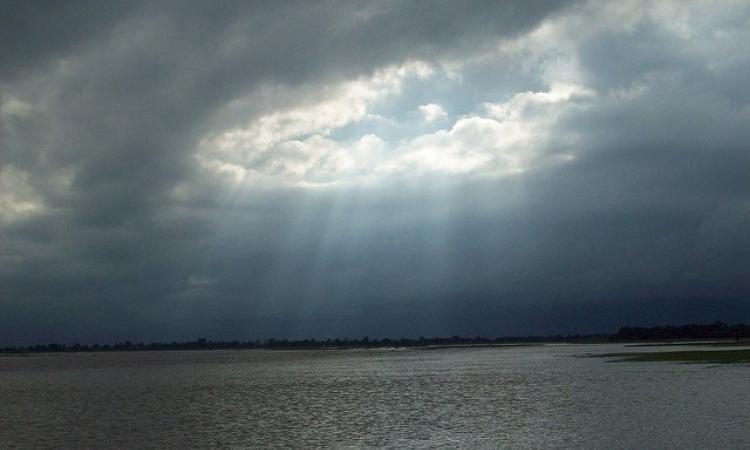
Droughts are becoming common in India
India has a long history of droughts. There were 26 major droughts from 1870 to 2018, when the All India Summer Monsoon Rainfall (AISMR) was found to be lesser than the mean rainfall for the country. Even the most recent drought was disastrous for India, affecting agriculture and water resources across the country.
A drought can be defined as “an extended period—a season, a year, or several years - of deficient precipitation compared to the statistical multi-year average for a region, that results in water shortage for some activity, group or sector.”
Evidence shows that there has been a gradual increase in the frequency of droughts in the second half of the twentieth century as compared to the first half. A number of studies have attributed droughts in India to El Niño effects, which occur when there is abnormal warming over the Pacific Ocean, which has a negative impact on the monsoon, as it blocks the flow of moisture-bearing winds from the oceans to the Indian landmass.
However, a new study titled ‘Elevated aerosol layer over south Asia worsens the Indian droughts’ published in Nature Scientific Reports finds that presence of high levels of aerosols in the atmosphere further worsen the El Niño effect and have a role to play in declining rainfall patterns and increasing incidence of droughts in the country.
What are aerosols?
Aerosols are minute particles suspended in the atmosphere. Sufficiently large particles scatter and absorb sunlight, and reduce visibility (haze) and redden sunrises and sunsets. Aerosols interact both directly and indirectly with the Earth's radiation budget, which includes the balance between incoming solar radiation and outgoing radiation (that includes partly reflected solar radiation and partly radiation emitted from the Earth, including the atmosphere). A change in balance can cause the temperature of the atmosphere to increase or decrease and affect the climate.
The impact of aerosols on the Indian monsoon
Aerosols lead to enhancement or suppression of the Indian summer monsoon rainfall depending on their duration and scale along with their tendency to scatter sunlight directly back into space, or by changing the size of cloud particles, thus negatively affecting their capacity to absorb sunlight. This leads to reduced temperatures over land, resulting in weaker land-sea temperature gradient, which is an essential force required to pull the monsoon circulation from ocean to land.
Recent evidence shows that aerosols levels increase during the El Niño period. For example, this study found that an elevated layer of aerosol was present over South Asia during the months of July-August of 2015 and 2016. However, this aerosol layer appeared thicker and was centered over the entire North Indian monsoon region during the El Niño period of July–August 2015, while it was much less thicker over the monsoon region during the non El Niño period of July–August 2016.
The role of ATAL in controlling the monsoon
According to a recent discovery, the presence of an aerosol layer in the upper troposphere and lower stratosphere (UTLS) known as “the Asian Tropopause Aerosol Layer (ATAL)” covers South Asia during the monsoon season, and has been suspected to have a role in controlling the monsoon precipitation. ATAL is formed because of the convective transport of aerosols from the lower atmosphere to the UTLS.
It has been found that ATAL extends over the 12–18 km range and is made up of sulfates along with black-carbon, organic aerosols, nitrates and dust particles. Black carbon aerosols in ATAL are transported from North India and East China during El Niño. Sulfate aerosols are transported from East-Asia. The black carbon and sulfate aerosol loadings are high during El Niño over the southern slopes of the Himalayas and Tibetan Plateau (TP).
The increase in sulfate, dust, and organic carbon aerosols in the UTLS leads to the thickening and widening of the ATAL over the South Asian region. The higher amounts of sulfate aerosols in the UTLS lead to a cooling effect of the earth’s surface by scattering incoming solar radiation and negatively affect the monsoon.
Combined effect of El Nino and aerosols is deadlier
While the El Niño leads to a decrease in rainfall over India, inclusion of aerosols amplifies decrease in rainfall by 17% over the central India. India and China are increasingly adding millions of metric tons of aerosols into the atmosphere further increasing the risk of severe droughts over the monsoon region.
Pollution control to reduce emissions
This could spell doom for a country like India. North–Central India is already experiencing hydrological stress and is already exposed to the vulnerability of hydrological extremes. The increase in the severity of droughts accompanied with El Niño could have a serious impact on agricultural production and the livelihood of millions of people living in the area.
The paper argues that one of the ways to deal with this is to focus on reducing aerosol emissions that would not only help in improving the air quality, but also help in reducing the negative impacts of aerosols on the monsoons and prevent droughts in the future.
A copy of the paper can be accessed here